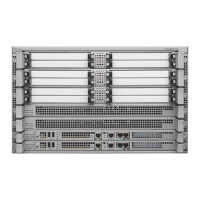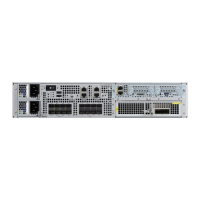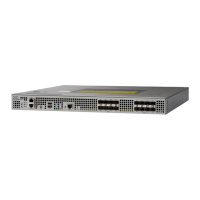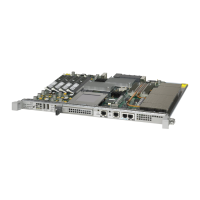15-8
Cisco ASR 1000 Series Aggregation Services Routers SIP and SPA Software Configuration Guide
OL-14127-08
Chapter 15 Configuring the 8-Port Channelized T1/E1 SPA
Configuration Tasks
Configuring Framing
Framing is used to synchronize data transmission on the line. Framing allows the hardware to determine
when each packet starts and ends. To configure framing, use the following commands.
Verifying Framing Configuration
Use the show controllers command to verify the framing configuration:
Router(config)# show controllers e1 0/3/0 brief
E1 0/3/0 is up.
Applique type is SPA-8XCHT1/E1
No alarms detected.
alarm-trigger is not set
Framing is crc4, Line Code is HDB3, Clock Source is Line.
Data in current interval (571 seconds elapsed):
0 Line Code Violations, 0 Path Code Violations
0 Slip Secs, 0 Fr Loss Secs, 0 Line Err Secs, 0 Degraded Mins
0 Errored Secs, 0 Bursty Err Secs, 0 Severely Err Secs, 0 Unavail Secs
Total Data (last 24 hours)
0 Line Code Violations, 0 Path Code Violations,
0 Slip Secs, 0 Fr Loss Secs, 0 Line Err Secs, 0 Degraded Mins,
0 Errored Secs, 0 Bursty Err Secs, 0 Severely Err Secs, 0 Unavail Secs
Command Purpose
Router# configure terminal Enters global configuration mode.
Router(config)# controller {t1 | e1}
slot/subslot/port
Selects the controller to configure.
• t1—Specifies the T1 controller.
• e1—Specifies the E1 controller.
• slot/subslot/port—Specifies the location of the
controller. See the
“Specifying the Interface
Address on a SPA” section on page 15-6.
For T1 controllers
Router(config-controller)# framing {sf | esf}
For E1 controllers
Router(config-controller)# framing {crc4 |
no-crc4}
Set the framing on the interface.
• sf—Specifies Super Frame as the T1 frame
type.
• esf—Specifies Extended Super Frame as the
T1 frame type. This is the default. for T1.
• crc4—Specifies CRC4 frame as the E1 frame
type. This is the default for E1.
• no-crc4—Specifies no CRC4 as the E1 frame
type.

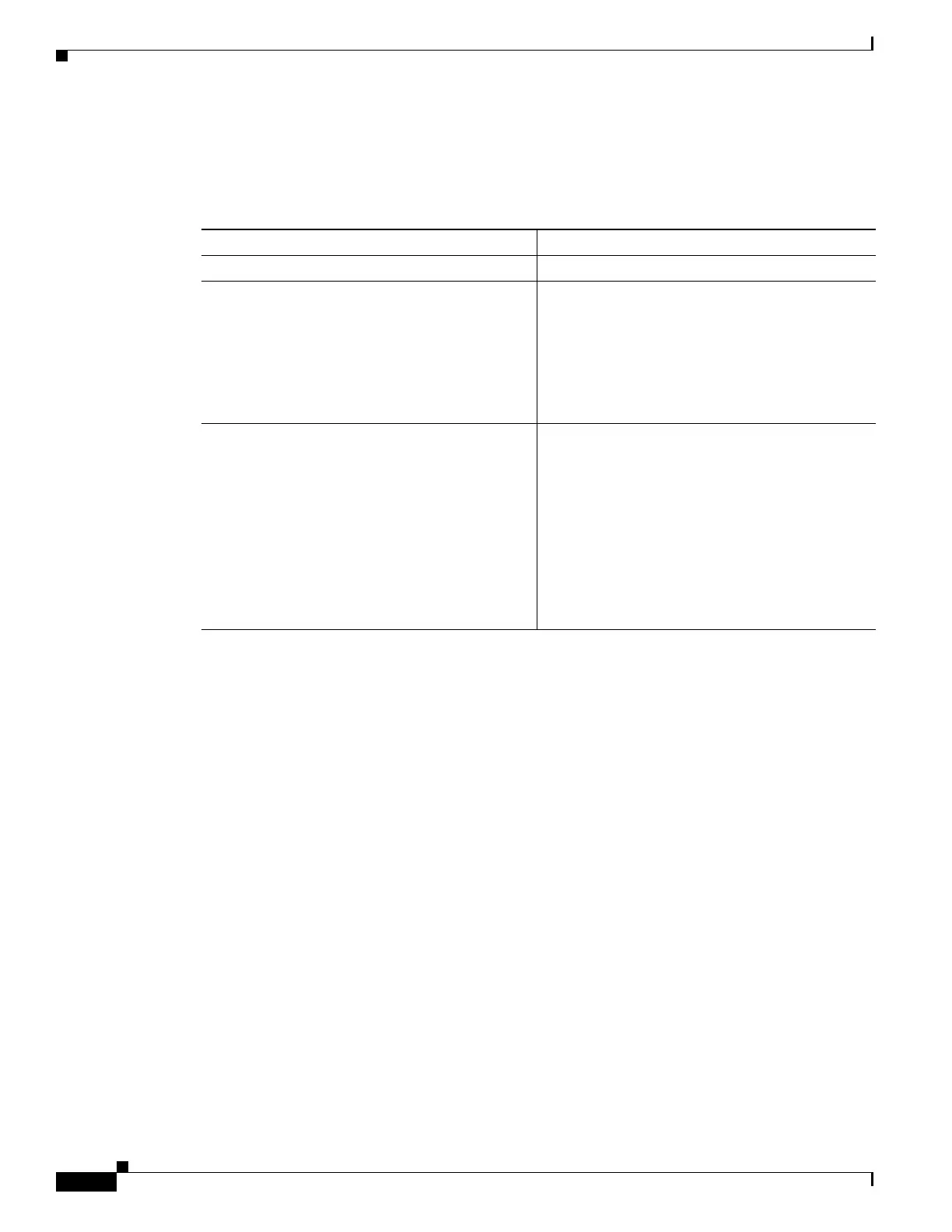